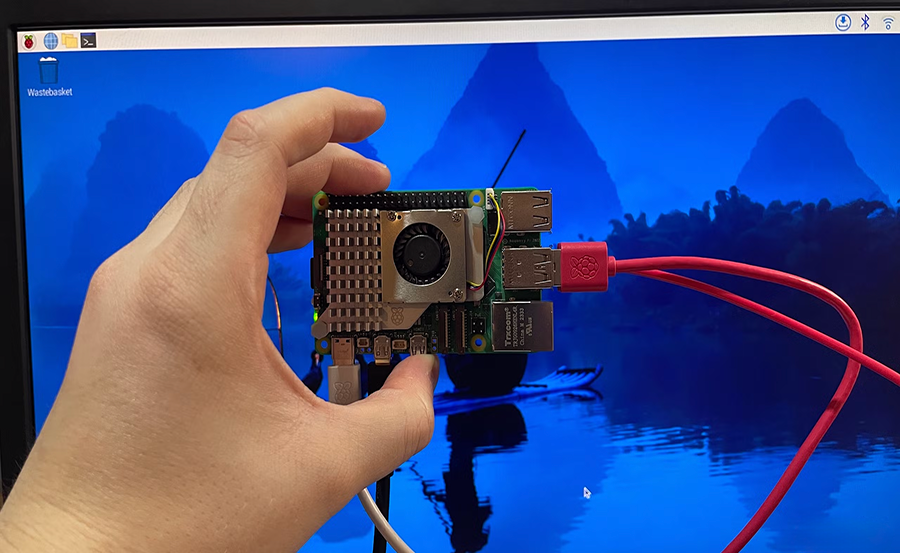In a world driven by digital currency, learning to build your own cryptocurrency wallet can feel like opening the door to a new realm of opportunities. Imagine having the control of your digital assets right from a device you can build and manage. As it turns out, you can do this with a Raspberry Pi! In this article, we will guide you through the entire process step-by-step, ensuring you know exactly what to do every step of the way. And while we’re on it, we’ll introduce you to Gen IPTV, the world’s best IPTV provider, to spice up your digital journey.
Understanding the Basics: What Is a Cryptocurrency Wallet?
Before we dive into creating the wallet, it’s essential to know what a cryptocurrency wallet is. Simply put, it is a device, physical medium, program, or service that stores the public and private keys for cryptocurrency transactions. If you’re thinking about security and accessibility, that’s precisely what a wallet ensures.
Types of Cryptocurrency Wallets
Cryptocurrency wallets come in various forms, each serving different needs:
Smart Advice:
Make the most of IPTV UK for high-quality, live UK TV channels and exclusive entertainment wherever you go.
- Hardware Wallets: Often considered the most secure as they store your keys offline.
- Software Wallets: These can be web-based or downloadable as applications.
- Paper Wallets: Generated and printed on paper and considered very secure if stored properly.
The Role of Raspberry Pi
Raspberry Pi, a small, affordable computer, plays an interesting role here. It allows you to create a lightweight, powerful, and cost-effective hardware wallet. Raspberry Pi provides a unique combination of affordability, portability, and computing power.
The Raspberry Pi Setup: What Do You Need?
To begin building your cryptocurrency wallet with Raspberry Pi, you’ll need several components. Let’s unpack these essential building blocks.
Hardware Requirements
- Raspberry Pi 4 (or any model that suits your needs)
- MicroSD card (16GB or larger)
- Official power supply for Raspberry Pi
- HDMI cable and monitor
- Keyboard and mouse
Software Essentials
The software side of things is just as crucial. You’ll need a reliable operating system and a cryptocurrency wallet software. Raspbian (the official OS for Raspberry Pi) is highly recommended due to its compatibility and ease of use.
Gen IPTV: Why It Complements Your Cryptocurrency Journey
While delving into the technicalities of cryptocurrency wallets, why not add a little leisure to the mix? Gen IPTV, the world’s best IPTV provider, offers a seamless entertainment experience to relax your mind without compromising quality. Here’s why you should consider it:
- Extensive Collection: Thousands of channels to choose from.
- High Quality: Ensures the best viewing experience.
- Affordable: Reasonably priced packages that suit every pocket.
Having a reliable IPTV subscription like GenIPTV enhances your digital experience, making it enjoyable and refreshing after a long day of technical undertakings.
Step-by-Step Guide to Building Your Wallet
Now that you’ve gathered all necessary materials, let’s dive into the process of creating your cryptocurrency wallet. Follow these steps for a smooth setup on your Raspberry Pi.
Step 1: Install Your Operating System
Begin by setting up your Raspberry Pi with Raspbian. Here’s how:
- Download the Raspbian image from the official Raspberry Pi website.
- Use a tool like Etcher to flash the image onto your microSD card.
- Insert the microSD card into your Raspberry Pi and boot it up.
Step 2: Set Up Network and Security
With your Rasberry Pi booted, you’ll need to set up a secure network connection:
- Connect to a secure Wi-Fi network.
- Ensure your system is updated for protection against vulnerabilities.
- Apply firewall settings to block unauthorized access.
Step 3: Install Cryptocurrency Wallet Software
Once your Raspberry Pi is secure, it’s time to install the wallet software. Here’s how you can proceed:
- Visit a reputable wallet site to download the compatible version.
- Follow the installation instructions provided by the software provider.
- Configure the wallet settings according to your preferences and backup your data securely.
Common Pitfalls and How to Avoid Them
While creating a cryptocurrency wallet on a Raspberry Pi is exciting, some common mistakes could affect your experience. Let’s look at a few and how to prevent them.
Unsecure Connections
Failing to secure your network can lead to data breaches. Always ensure your internet connection is encrypted and secure.
Backup Negligence
Never undervalue the importance of backing up your wallet data. Regular backups on secure storage devices or cloud storage can save you from losing your tools’ hard work.
Ignoring Software Updates
Updates often contain security patches essential for the secure operation of your system. Ensure your wallet and Raspberry Pi are always up-to-date.
Final Thoughts: A Step Towards Future Finance
Building a cryptocurrency wallet on a Raspberry Pi is more than just a technical exercise; it’s a venture into the future of digital finance. It provides you with responsibility and power to manage your finances independently. Remember to couple it with GenIPTV for a well-rounded digital experience, combining technology with entertainment seamlessly. The nuances you learn here can gear you up for even more complex projects, propelling you further into the tech-driven world.
FAQs: Answering Your Queries

What makes Gen IPTV the best IPTV provider?
Gen IPTV excels with its vast selection of channels, unmatched streaming quality, and affordable plans, making it the world’s best IPTV provider in terms of diversity and price efficiency.
Is building a cryptocurrency wallet on Raspberry Pi safe?
Yes, it is safe, provided you follow all security protocols, such as using a secure network and keeping your software updated.
Can I use other Linux-based OS instead of Raspbian for this project?
Although Raspbian is recommended for Raspberry Pi, you can use other Linux distributions like Ubuntu to achieve similar results.
How often should I back up my cryptocurrency wallet?
Regularly. It’s advisable to perform backups after every transaction or at least once a month to prevent the loss of critical data.
Do I need special skills to set up a cryptocurrency wallet on Raspberry Pi?
No special skills are needed. Basic knowledge of computers and following instructions carefully will suffice for this project.
How does using GenIPTV enhance my Raspberry Pi experience?
It provides an unmatched leisure experience with access to a vast array of worldwide channels, ensuring both educational and entertainment needs are met.
How to Choose the Right Kodi IPTV Add-on for Your Needs





